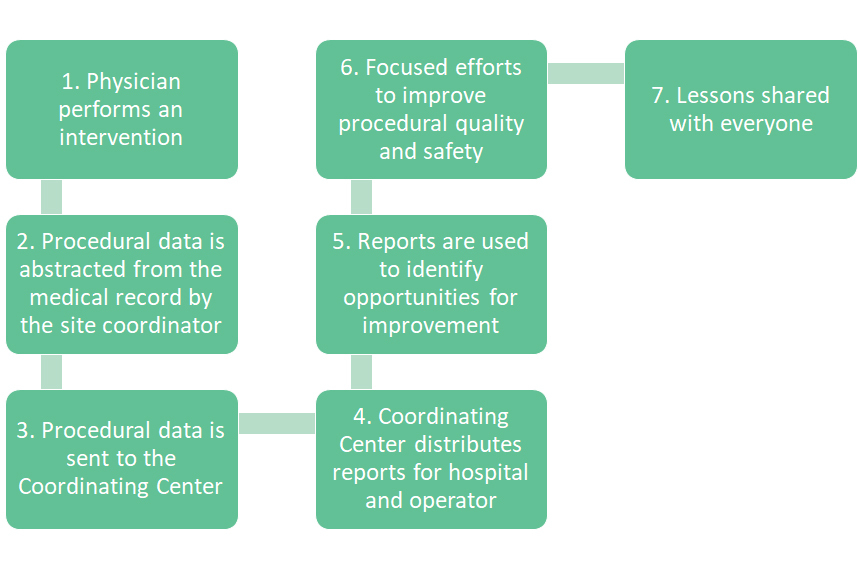MISHC is a prospective registry and a regional collaborative effort to assess and improve quality of care and outcomes of patients undergoing structural heart procedures. Learn more here
How it Works

Our Scope
Transcatheter Aortic Valve Replacement
Transcatheter aortic valve replacement (TAVR - also known as TAVI or transcatheter aortic valve implantation) is a procedure for patients with aortic stenosis, a narrowing of the aortic valve opening. TAVR percutaneously delivers a fully collapsible bioprosthetic valve to the valve site through a catheter. TAVR initially provided an alternative for people who needed valve replacement but were considered high or inoperable risk for open heart surgery. Now, the minimally invasive approach is the first option for many people, regardless of risk. Through shared decision making the heart team and the patient discuss goals of care and develop a life plan that makes sense for each patient.
Transcatheter Mitral Valve Repair and Replacement
Transcatheter Edge-to-Edge Repair (TEER) is used in the treatment of mitral regurgitation. A TEER device involves clipping together a portion of the mitral valve leaflets as treatment for reducing mitral regurgitation (MR).
Transcatheter Mitral Valve Replacement (TMVR) is a procedure for patients with mitral stenosis, or narrowing of the mitral valve opening. TMVR percutaneously delivers a fully collapsible bioprosthetic valve to the valve site through a catheter. Both TEER and TMVR are performed mainly in patients who are judged to be high to prohibitive surgical risk for open heart surgery.
Ensuring data quality
- A select sample of all patient records submitted to the STS/ACC TVT™ Registry by participating sites are reviewed by a nurse auditor annually.
- Auditors verify accurate data abstraction and 100% case capture into the registry.
- All data entered for select outcomes are checked against the patient chart.
- All new data abstractors participate in comprehensive training.
- The Coordinating Center hosts conference calls with data abstractors to answer questions and to discuss data abstraction issues.
Our Data
The MISHC Coordinating Center receives a quarterly data feed from the STS/ACC TVT™ Registry. TVT data is used to assess outcomes and identify potential quality improvement opportunities.
- Patient demographics
- Provider & facility characteristics
- History & risk factors
- Cardiac status
- Detailed health status
- Procedure indications
- Pre, intra, and post procedure data points
- Adverse events
- Discharge information
- Follow-up data (30 days & 1 year)
